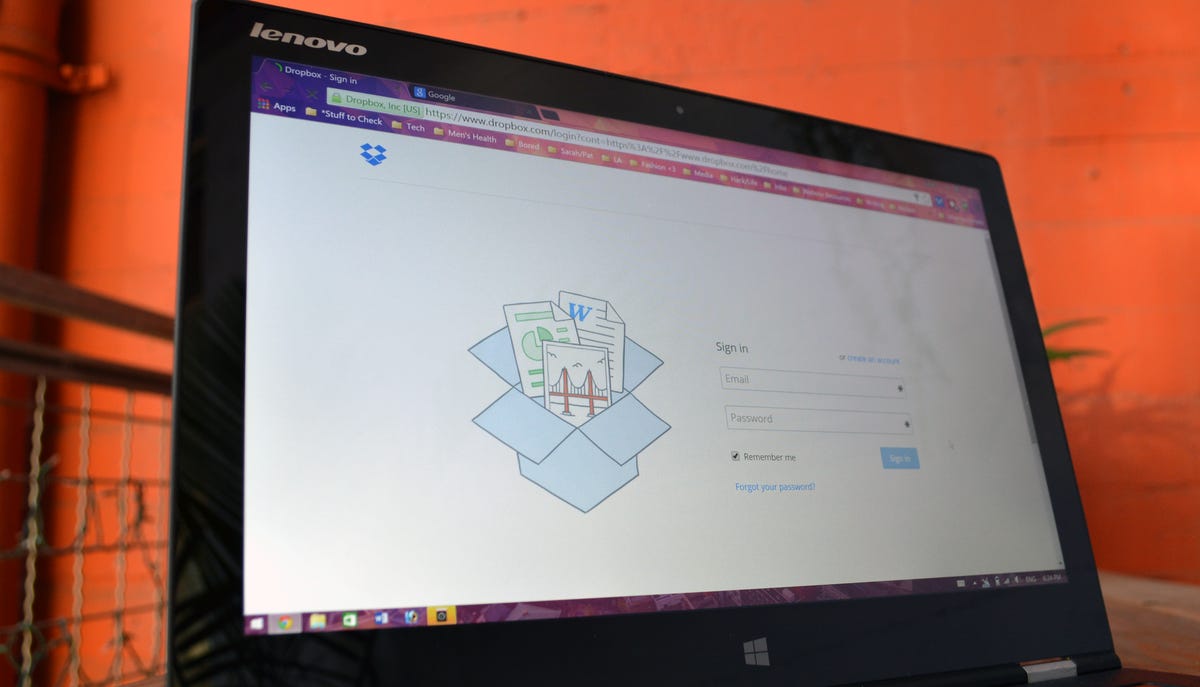
Sarah Jacobsson Purewal/CNET
I certainly hope you back up your PC more than once a year, but I won’t kid myself — people are not good at keeping backups up-to-date. One of the main reasons for this is convenience, or rather, lack thereof. Backing up your data to an external hard drive is difficult and inconvenient, because you have to do things like plug your hard drive in, and turn it on (seriously, though, I’ve used these as excuses to not back up my PC).
That’s why cloud services are so appealing — they’re always working in the background, and all you need is an Internet connection, not a piece of equipment. So here’s the question: Should you use a cloud storage service or a specially designed cloud backup service to make a cloud backup of your PC? The answer is obvious, and here’s why:
Cloud storage services
People typically use cloud storage services, such as Dropbox, Google Drive, OneDrive, and Copy because they’re convenient — these services let you quickly access your files from multiple devices, and are usually a better option than continuously emailing files to yourself. But you can also use cloud storage services as an easy way to back up your PC, though that doesn’t mean you necessarily should.
There are several issues that can arise if you’re using a cloud storage service to back up your PC. First, cloud storage services work by installing a sync folder on your hard drive. Any files placed inside this folder will automatically sync to the cloud, as well as to any other devices you may have the app installed on. Because these services require an extra step (e.g., you have to actually put files you want to be backed up into the correct folder), they’re not ideal for people who are looking for a hands-off backup solution.
Another issue with cloud storage services is the automatic syncing — these services sync all changes to all files in the sync folder automatically. This means that if a file is accidentally deleted, gets corrupted or ends up with a virus (worst-case scenario: a ransomware virus manages to encrypt it), this change is automatically synced to the cloud and to your other devices. While many cloud storage services do make multiple backups of your files (Dropbox allows you to access recent changes up to 30 days in the past, or 1 year for a fee), they’re not always reliable.
For these reasons, while it’s not a bad idea to have an extra copy of important files in your Dropbox folder, this should not be your primary (and especially not your only) backup.
Cloud backup services
Although cloud backup services seem similar to cloud storage services, they differ in a few key ways.
Cloud backup services start at around $5/month for unlimited backup space. Unlike storage services, backup services back up your entire PC, so you don’t have to worry about putting your important files in one folder. While most cloud backup services only back up your files and folders — not your operating system and settings, Carbonite will do a mirror-image backup for $99/year (Windows only).
Cloud backup services do not sync the same way cloud storage services do. Instead of overwriting your files when you change them, backup services archive the older version and also save the newer version. Carbonite saves the original file and around 12 archived versions (more, if the file is frequently edited), for as long as the file is part of your backup (if you delete a file from your PC, Carbonite will only retain the deleted file on its server for 30 days). CrashPlan retains an unlimited number of archived file versions, as well as the original file, and also keeps all of your deleted files forever. If you do happen to get a virus on your PC, your data won’t end up wiped out or encrypted like it will if you’re using a cloud storage service.
Needless to say, for backup purposes, a cloud backup service is a much better choice than a cloud storage service. That doesn’t mean that cloud storage services can’t still be a convenient way to keep your files synced across devices, they just shouldn’t be your main form of cloud backup. Oh, and it’s always a good idea to have multiple backups, including a non-cloud backup.




